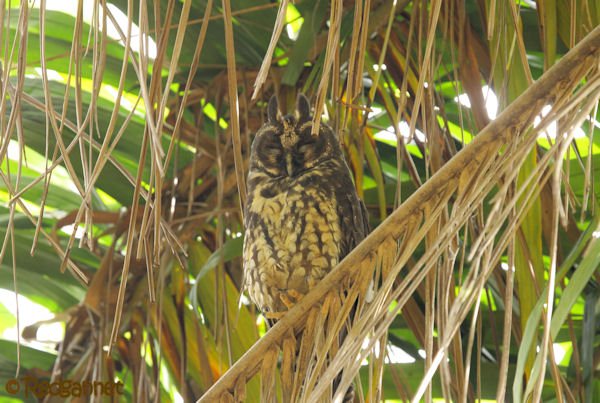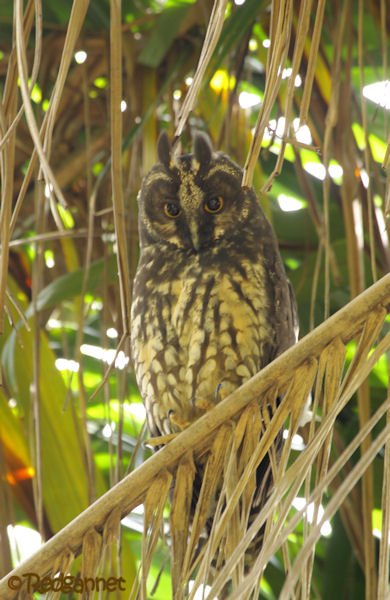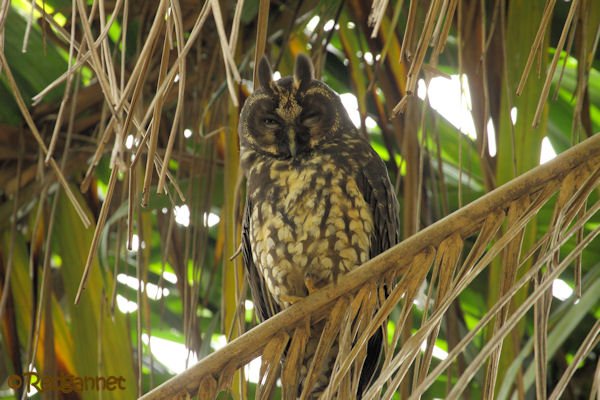
This week, I have been pondering the value of bird rehabilitators. Let me assure you that I have no doubts about how much they contribute to individual birds and to the ravaged conscience of modern man. A world without bird and/or mammal, fish and reptile rehabilitators would be a very sad one.
My pause for thought came when I found a Stygian Owl in a city park in Sao Paulo, Brazil. When I say “found”, I meant to say “was shown”. I bumped into a birder as he was watching a Black-necked Stilt on the lake. Never having seen a birder in the park before, I hoped to glean a bit of local knowledge from him. Despite his limited English and my non-existent Portuguese, Renato managed to communicate that there was an owl close by. Needless to say, I was absolutely thrilled when he located it for me and I made the mental tick there and then. I wanted to ask him a few questions about the bird, but our communication bandwidth was very narrow, so I made do with a few photos, a handshake and a big smile.

A few moments later, another birder appeared. Alex had better English and was able to respond to my questions; the owl had been in this spot for about a week and it had previously been seen in the woods to the south west. He didn’t know if it was male or female.
Then came the bombshell. It was a rehabilitated bird that had been released into the park.
Can I include a rehabilitated bird on my life list? Curse those ministering, rehabbing angels for their kindness and dedication and for presenting me with such a quandry. And curse you too, Alex, for your grasp of English. That is probably enough cursing in the circumstances. The Portuguese believed that the owl was a portent for bad luck and despised them. The tradition has carried on into Brazilian folklore as Alex informed me in his good English.

The questions that are raised with a rehab bird are things like; without human help, would the bird have lived? Would it be here in a city park?
I wish that I had pressed Alex more closely on the provenance of the owl. He did mention that the rehabbed bird had been released over 4 years ago. Thus, assuming that it was the same bird, it had managed to fend for itself and live wild for that long.

Would a rehabber release a bird into a city park if it had not been rescued from inside the city? There are a few other sightings of Stygian Owls around Sao Paulo city in the past few years, so unless it is the same one that got lost in the one-way system…..
Luckily , this is a purely personal dilemma as the 10,000 Birds collaborative list already contains sightings of Stygian Owl courtesy of Nate and Donna. So I will wrestle with my conscience about including the owl on my list and for momentarily doubting the great work of rehabilitators everywhere. Perhaps I will just keep it until another one comes along.













If the bird was recovered there, rehabilitated and released back to it’s previous environment. and has been living there in a wild state, with no assistance fro0m man, the I think it is a bird that can be counted!